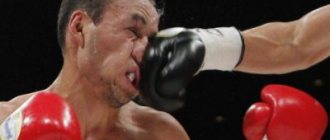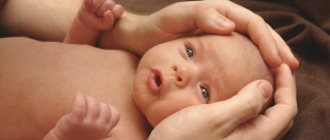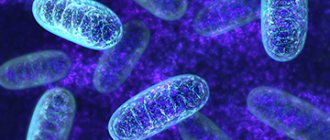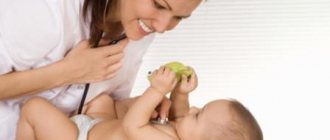Children do not sit still for a second, constantly run, jump, climb trees and often hit their heads when falling. More often than in adults, a concussion occurs in a child, the symptoms of which every parent should know in order to identify the injury in time and consult a doctor. Even if the mother takes great care of the baby and literally follows on his heels, a concussion in the child can happen at any moment, if you just turn away for a second.
Concussions in children occur very often. Much more common than in adults and more common than other traumatic brain injuries. Fortunately, such damage is considered mild and only in three percent of cases can certain consequences arise after it. Despite the apparent innocence of the injury, signs of a concussion should alert parents and serve as a reason for examination, because this injury may conceal more serious injuries - a brain contusion or a skull fracture.
Mechanism of damage
When an injury such as a concussion occurs in children, other head injuries may also be present. A bruise, wound or bump may appear on the child’s head at the site of the impact, but the integrity of the bones of the skull is not compromised. The brain shakes when the baby shakes its head for any reason, but no changes occur in the brain structure.
In medical statistics, doctors voice the following facts about this damage:
- Concussions in children are the most common compared to all other injuries;
- Every year, approximately one hundred twenty-five thousand children are diagnosed with this injury;
- When parents go to the doctor with a traumatic brain injury in a child, doctors find a concussion in nine out of ten children.
School-age children most often suffer from concussions; the least common type of injury can be found in infants. The symptoms of a concussion in older children are easier to understand than in very young victims.
What to do before the doctor arrives
Parents should pay close attention to the child’s condition after injury. It is unacceptable to panic, fuss, upset, or frighten him; it is advisable to ask him about the symptoms and reasons for what happened. You need to call an ambulance, but until it arrives it is prohibited :
- self-medicate;
- shake the little one to revive him if he loses consciousness;
- put him on his back;
- leave unattended;
- give painkillers;
- take yourself to the hospital.
If a loss of consciousness occurs or vomiting occurs due to a concussion in a child, until the doctors arrive , it is necessary to lay the victim on his side. The knees should be bent, the arms should be under the head, the baby should take a stable position. Parents are required to do the following:
- examine the head for damage;
- if necessary, treat the wound with an antiseptic - hydrogen peroxide, Chlorhexidine;
- make a dressing;
- apply cold to the injury site;
- prevent falling asleep;
- limit mobility;
- control the condition.
Parents must be proficient in artificial respiration and chest compressions if there is a need for resuscitation before the ambulance arrives. They should:
- in the absence of loss of consciousness, lay the victim down, cover him with a blanket, the head should not be lower than the body;
- take your pulse;
- check breathing, heartbeat;
- examine the child for injuries, fractures of other parts of the body;
- Find out the details of what happened from witnesses.
Article on the topic: Diadynamic therapy - treatment with low frequency current
Causes
Manifestations of trauma in children of different ages can occur for various reasons:
- A newborn baby can suffer a brain injury due to the fact that young parents are too careless and do not properly supervise the baby. Most often, symptoms of a concussion in an infant appear after he has fallen from a changing table, fallen out of a stroller, or been dropped from someone's arms. The head of a child under one year old is the heaviest part of the body, so during a fall, it is pulled down. The baby does not yet know how and does not understand that he can protect his head with his hands, so when he falls he hits it.
- Signs of a concussion in a child from two to six years of age arise due to the baby’s increased motor activity, due to the fact that his motor skills and coordination are still imperfect, and also due to the fact that the baby at this age does not yet have a well-developed instinct self-preservation, is not afraid of heights and does not feel danger. Once the baby masters walking, hitting his head becomes almost commonplace.
- There can be a variety of causes of injury in school-aged children. This could be a fall from a tree or other high place, a blow to the head with a briefcase or book, a fight with a peer, or other unpleasant situations. In addition, a child can get a concussion if he brakes suddenly while riding a bicycle, or if he falls on his buttocks. In medicine, this type of concussion is called shaking syndrome or shake syndrome. That is, when children receive a concussion, symptoms appear not only from a direct blow to the head.
Symptoms and first signs
The signs by which one can suspect that a child has suffered a concussion after a blow or bruise differ in children of different ages and also depend on the degree of damage caused by the brain injury.
Considering the severity of the manifestations, three types of concussion are classified:
- I degree (mild manifestations). The victim does not lose consciousness even for a few seconds, and the pathological symptoms persist for no longer than 15 minutes and go away without treatment. But it is necessary to show a child or teenager to a doctor in order to absolutely exclude possible serious injuries or other types of traumatic brain injury.
- II degree (moderate). The child is conscious, but signs of brain damage and disorientation in time and space appear for more than 15 minutes.
- III degree (severe injuries) – the victim experiences a short (up to several seconds) or prolonged loss of consciousness. Symptoms may persist for up to several days.
One should take into account the fact that in children under one and a half, sometimes up to two years of age, loss of consciousness is extremely rare with a concussion. Therefore, the basic criteria for determining the severity of injuries apply to older children.
Typically, short-term loss of consciousness is typical for children over 3 - 4 years old
The main indicators by which the severity of the condition of children over 3 years of age after a concussion is determined:
- Time of loss of consciousness - the longer the child is unconscious, the more severe the damage.
- The urge to vomit, nausea - the more pronounced they are and the longer they persist, the deeper the injury.
- Identification of so-called retrograde amnesia, in which a teenager is unable to remember events that occurred before the injury. The longer the “forgotten” period of time, the more the child suffered.
Headache, blurred vision, short-term amnesia (memory loss)
Symptoms of concussion in children of different ages according to severity Table No. 1
| Severity | Infants, children under 1.5 years old | Children from 1.5 – 2 to 6 years old | Pupils |
| I | In children under one year of age, symptoms are usually mild. Observe:
|
|
|
| II |
|
| |
| III | Symptoms of degree I severity include:
|
| |
| The dilation and contraction of the pupils on the left and right occurs unevenly (different diameters) | |||
| Repeated vomiting, painful nausea, severe dizziness | |||
Features of concussion in infants
After a child falls, is bruised, or hits the head, you should immediately call an ambulance if:
- A baby, child, teenager fell asleep soundly and for a long time after hitting his head.
- A child or teenager experiences severe nausea with bouts of repeated vomiting.
- The child complains of a severe headache and double vision.
- He is breathing frequently and heavily against the background of severe pallor and perspiration.
- He cannot pronounce words clearly and is confused in his speech.
- His movements changed, becoming uncoordinated or jerky.
- The baby's fontanelle protrudes strongly.
- There are different pupil sizes, squinting, and trembling of the eyes.
- Watery or mucous fluid or blood appears from the nose or ears.
- The baby loses consciousness, and after the injury he does not remember what happened.
The specificity of concussion in children is that a generally satisfactory condition suddenly worsens after 10 to 48 hours.
Uneven pupil dilation in a child
Symptoms removed in time
These signs often accompany a child’s head injury, appearing immediately after a concussion or 2 to 5 days later.
- headaches and mild nausea;
- irritation to light and sounds, normal in intensity;
- causeless tearfulness;
- overexcitement or lethargy;
- increased irritability;
- rapid mood changes;
- restless night's sleep with prolonged falling asleep, sudden awakenings;
- inability to concentrate on a conversation, game, or specific activity.
Clinical picture
Often, symptoms do not appear immediately, so parents may not associate a head blow with the symptoms that have arisen. Symptoms of a concussion in children may depend on the severity of the injury and the age of the injured child. Also, symptoms and treatment depend on whether there are other traumatic brain injuries. To know how to identify a concussion in a child, you need to know the immediate signs of injury:
- the child's skin becomes pale, but the face may quickly turn red;
- the pupils temporarily begin to move in different directions;
- the child feels sick and vomits one or more times;
- a baby who can speak can say that he has a sharp headache;
- the victim may lose consciousness for several minutes (the severity of the injury depends on the time spent in an unconscious state);
- there are disturbances in the heartbeat and pulse, it may become faster or slower;
- breathing becomes erratic;
- nosebleeds may be present;
- the pupils become smaller or larger and stop responding to light.
If you do not seek medical help in time, secondary symptoms may occur that are not as pronounced, but continue for a long time. The baby becomes lethargic and inactive. He even stops being interested in what he used to love to do. A headache of aching nature occurs, which periodically repeats and begins to make noise in the ears. The baby develops vestibular disorders, becomes dizzy, becomes overly sleepy, or, conversely, cannot fall asleep for a long time due to excitement.
If an injury occurs in a baby, he begins to spit up frequently, becomes capricious, and cries from a headache. Sometimes parents attribute this baby’s condition to colic or other digestive disorders and do not consult a doctor. Body temperature during a concussion in infants remains the same, and its increase indicates the addition of a secondary infection.
If a child experiences any symptoms that occur after a head blow, an examination should be carried out, since the concussion may mask other injuries. Parents cannot see whether the skull bones are intact and whether the brain is bruised; this can only be diagnosed with the help of special medical equipment. The most important thing parents should do is call an ambulance and take the baby to the emergency room.
Symptoms
The baby's skull has bones that cushion when in contact with heavy objects. This protects the brain from irreversible consequences. Parents should closely monitor their children after injury. Often, signs do not appear immediately, but after several hours or even days. This is associated with an imperceptible, short-term loss of consciousness. Clinical symptoms of concussion depend on age , with:
- They are difficult to identify in infants due to their similarity with signs of other diseases.
- Older children can talk about their feelings themselves.
Article on the topic: Buspirone is an effective remedy in the fight against anxiety, fear and panic
Symptoms of pathology are varied. Single signs or several at once are observed. After injury, the following manifestations are observed: :
- general cerebral – amnesia, loss of consciousness, dizziness, flashing spots before the eyes;
- autonomic disorders - increased breathing, sweating, pressure surges;
- asthenic changes – palpitations, tinnitus, weakness;
- impaired coordination of movements.
First manifestations
Parents of a child who has suffered a head injury need to know the first signs of a concussion in their child. This will help to provide him with timely assistance. The initial manifestations of pathology are:
- vomit;
- pale skin;
- sudden redness of the face;
- loss of consciousness;
- headache;
- change in heart rate - faster, slower;
- nose bleed;
- breathing disorder.
For infants after a concussion, an increase in motor activity and agitation is typical. The baby screams a lot, cries, sleeps poorly. Older children experience:
- loss of orientation in space;
- dizziness;
- sweating;
- hematoma on the head;
- desire to sleep;
- inability to concentrate gaze;
- short-term blindness;
- noise in ears;
- lethargy;
- weakness.
It is important to pay attention to the pupils when a child has a concussion. He may have a lack of sensitivity to light and reaction to external stimuli. The following symptoms of pupillary pathology are characteristic:
- desynchronization of movement;
- reduction, increase in size;
- expansion, contraction;
- twitching;
- involuntary movements;
- change in shape;
- strabismus;
- the difference in size is a symptom of severe trauma.
Late signs
If parents did not notice the baby’s injury in time and did not consult a doctor, the symptoms become less pronounced . Late symptoms are characterized by frequent recurrence and are protracted. When a concussion occurs :
- poor appetite;
- lack of interest in favorite activities;
- sensitivity to light, loud sounds;
- aching pain in the head;
- problems falling asleep;
- lethargy;
- mood changes;
- tearfulness;
- touchiness;
- vulnerability;
- increased drowsiness.
For a baby, the consequences of a concussion are manifested by refusal to feed, frequent regurgitation, anxiety, and moodiness. Preschool children and teenagers often do not remember what happened to them. Trauma is characterized by the following secondary symptoms: :
- photophobia;
- nightmares;
- lack of response to parents' appeals;
- irritability;
- insomnia;
- severe fatigue;
- hot temper.
Dangerous manifestations
Pediatricians draw parents' attention to symptoms that require immediate medical attention. Timely assistance reduces the likelihood of subsequent complications. Calling an ambulance is necessary for such dangerous manifestations of traumatic brain injury as:
- visual impairment - blindness;
- loss of consciousness;
- dizziness;
- increased sweating;
- facial asymmetry as a result of ligament tension;
- bringing the eyeballs to the bridge of the nose;
- retraction of the tip of the tongue;
- temperature increase;
- vomit.
Diagnostics
A child who has suffered a concussion is examined by a neurosurgeon, traumatologist and neurologist. After a general examination and interview with the parents, the baby is sent for the following studies:
- X-rays are performed to find out if there is damage to the bones of the skull;
- Neurosonographic examination (ultrasound through the large fontanelle) is performed on children up to one year of age, until the bones of their skull are not as dense as in older children and helps to see the cerebral ventricles and gray matter;
- ECHO encephalography helps to see if there is a shift in the midline of the brain;
- Computed tomography helps assess the condition of the brain and skull itself;
- Magnetic resonance imaging in infants is performed under general anesthesia, as it is a rather lengthy procedure that requires immobility and shows changes in the structure of the brain and central nervous system;
- Lumbar puncture is performed if there are serious indications for it; it helps to identify complications of injury, but in pediatrics this procedure is almost never performed;
- Electroencephalography is good at studying the bioelectrical activity of the brain, revealing the severity of damage and the location of damaged cells.
Some of these studies may not be conducted. The most informative method for making a diagnosis in children is a computed tomography scan. After the examination, the doctor records the information obtained in the patient’s outpatient record and passes it on to the attending physician, who decides how to treat a concussion in each individual child.
How to determine a concussion in a child
The development of this form of TBI in adults is very often accompanied by fainting. Due to the characteristics of the child’s body, the child may not have this consequence, which does not necessarily indicate the severity of the situation.
Even if the baby did not lose consciousness, he needs immediate diagnosis. Parents themselves are able to suspect the presence of a concussion in a child based on a number of symptoms.
First manifestations
Children are not able to describe their feelings and complaints as clearly as adults. Parental attentiveness plays an important role in identifying concussions in childhood. The initial symptoms of TBI appear within a few minutes after the child receives a blow, so the victim must be monitored for some time after the accident.
Symptoms appear within a few minutes after the baby receives a blow.
The first obvious signs of a concussion in a child include:
- pallor or sudden redness of the facial skin;
- loss of consciousness for a period of five seconds to several hours;
- headache;
- nausea, vomiting (one-time);
- increased or slowed heart rate, changes in breathing quality;
- dizziness and lack of coordination;
- nose bleed;
- increased excitability or lethargy, desire to sleep, weakness;
- difficulty concentrating your gaze on a specific object;
- noise in ears;
- Pupils with a concussion may not respond to light, change shape, or be too small or large. It is also possible that their movements may become unsynchronized, involuntary twitching, or a difference in size.
The first signs include nosebleeds.
Visual assessment of the impact site often reveals a hematoma or cut. It is noteworthy that the early stages of concussion in infants are usually accompanied by an increase in their motor activity and anxiety. Older children often, on the contrary, become detached, indifferent, and lethargic.
Late signs
In situations where the initial manifestations of a child’s head injury were not noticed by the parents, the clinical picture begins to smooth out.
Symptoms become blurred and less pronounced. From the outside it may seem that the baby is simply being capricious or trying to attract attention.
Late signs of concussion in children:
- loss of appetite;
- loss of interest in once-loved activities and things;
- increased excitability in response to the influence of bright light, loud sounds, strong odors;
- sleep disturbances due to constant drowsiness;
- obsessive, aching headaches;
- nightmares - sometimes the child becomes very scared and refuses to sleep;
- tearfulness, lethargy, vulnerability, increased sensitivity to the effects of emotional stimuli.
Late signs include loss of appetite.
Older children often suffer from amnesia at this stage. They forget the fact of the injury, the circumstances of the incident, or what happened to them right before the accident.
Dangerous manifestations
Experts identify a number of symptoms, when they appear, it is necessary to immediately show the child to a doctor.
It is better not to transport the baby yourself, but to call an ambulance. This list includes loss of consciousness for any period of time, blindness, increased sweating, convergence of the eyes on the bridge of the nose, fever with vomiting. Severe dizziness leading to problems with coordination, retraction of the tip of the tongue and facial asymmetry are also considered alarming signs.
Therapeutic measures
Treatment of concussion in children, if it is of the second or third degree of severity, is carried out in the hospital. Doctors alleviate the condition of the little patient and prevent possible consequences. During treatment, the child remains in bed and takes medications in the form of tablets or intravenously through a drip.
To prevent edema, the doctor prescribes diuretics to speed up the restoration of brain functions, prescribes neotropic medications, and the baby must also take anti-convulsants and those that normalize the pressure inside the veins. For severe headaches, painkillers are prescribed. When taking a large number of medications, children sometimes develop an allergic reaction, so antihistamines may be prescribed for prevention purposes.
If the injury is of the first degree, then you can be treated at home, while strictly following the doctor’s recommendations and taking prescribed medications. The child should be calm and not nervous. Watching TV and sitting at the computer should be limited, as this leads to stimulation of the nervous system and slows down recovery.
Recovery prognosis
In most cases, the prognosis for concussion in children is favorable, especially if treatment was started immediately. If the baby does not have any concomitant injuries to the skull or brain, then complete recovery occurs within a period of 7 to 14 days .
If treatment is not started in a timely manner or the parents completely refuse hospitalization, the recovery process can be very delayed. Symptoms of quite dangerous diseases may appear.
Concussion is one of the most dangerous conditions in children. A timely visit to a specialist is a guarantee that your baby will be healthy and able to fully develop. Self-medication will not only not bring results, but can also lead to disastrous consequences.











